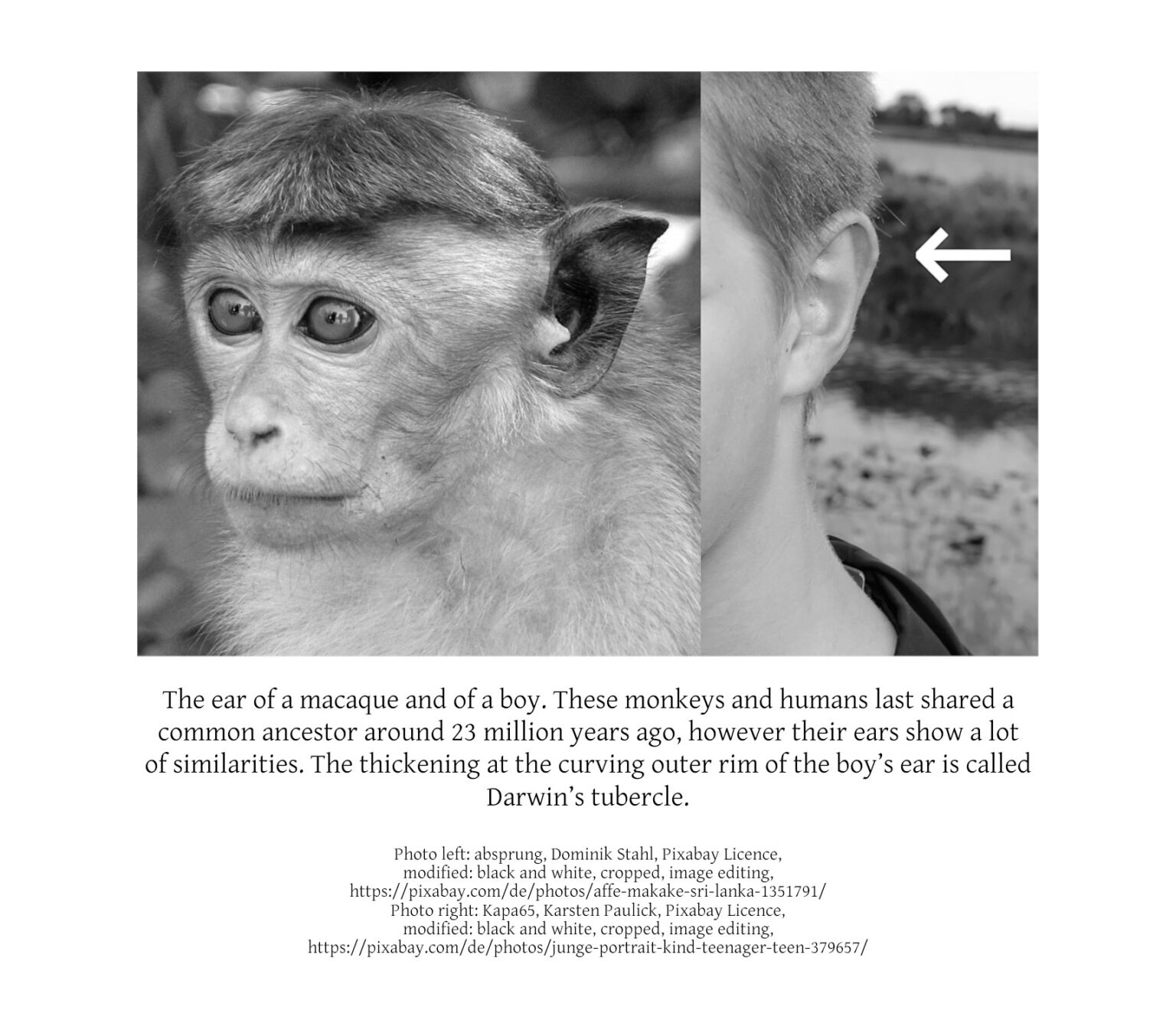Epilogue about evolution
Adam the Ape has a scientific epilogue, which explains the theory of evolution for young readers. Here is an excerpt:
Charles Darwin (1809–1882) is the most widely known scientist to recognize the relationship between humans and animals. He was one of the founders of the theory of evolution, which states that all living things—animals and plants—are related and that they developed from other creatures over many generations. Living things adapt to their surroundings and slowly develop into different creatures over time. Their adaptations are caused by chance changes, called mutations, that help those living things survive in particular surroundings.
For instance, some bear species have lighter fur, and some have darker. Polar bears have developed white fur as an adaptation to their snowy landscape. It helps them to better camouflage themselves and hunt their prey. If brown bears lived in a polar area, they would be much more visible to prey and less successful at hunting. They would be more likely to die of hunger, leaving fewer descendants and leading to extinction in that region.
For a bear living in a snowy region, having white fur is the best trait for survival. This process is called the struggle for life, which leads to natural selection, or the best-adapted creatures surviving.
Different kinds of creatures who all share a common ancestor develop differently in different surroundings. This occurs after countless generations experiencing countless slight adaptations. Some people don’t accept the scientific principle of animals having common ancestors because the numerous adaptations that ultimately lead to a new species take place over spans of thousands of years or more, which makes it impossible to witness these changes in a lifetime.
However, evolution is overwhelmingly accepted as fact among scientists and can be proven—for example, through fossil findings. These preserved remains in stone show earlier versions of today’s creatures. For example, there are fossils of dinosaurs with feathers who lived around 150 million years ago. They are seen as the ancestors of the birds living today.
(…)

